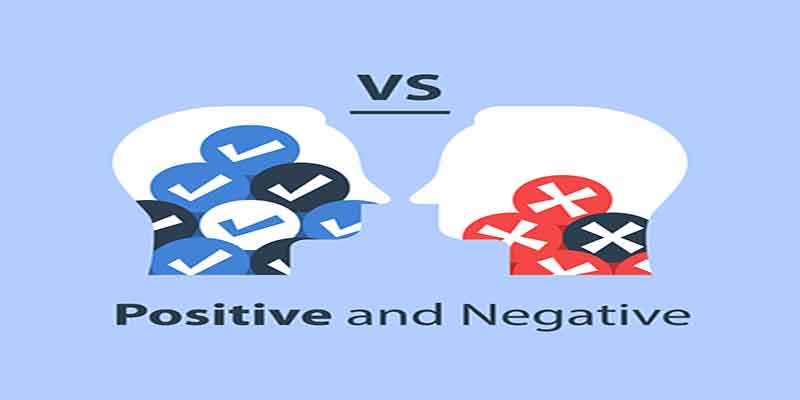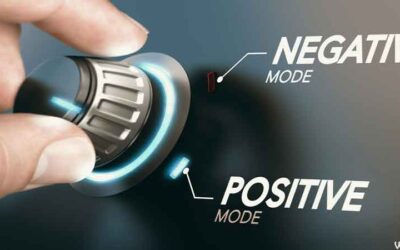Attitude defines the personality of a human. This falls between two categories, the good and the bad. It is the predisposition to behave in a particular way to a certain things, objects or persons. Attitude influences a person’s choice of action. In psychology, psychology is a mental develop, a psychological and passionate substance that inheres in, or portrays an individual. They are mind boggling and are a gained state through encounters.
Unmistakable clinician Gordon Allport depicted this inert mental build as “the most particular and essential idea in contemporary social psychology.”Attitude can be framed from an individual’s over a significant time span. Key themes in the investigation of perspectives incorporate attitude strength, attitude change, consumer behavior, and attitude-behavior relationships.
A attitude is an assessment of a mentality object, going from very negative to incredibly positive. Most contemporary points of view on mentalities grant that individuals can likewise be tangled or conflicted toward an article by at the same time holding both positive and negative perspectives toward a similar item. This has prompted some conversation of whether the individual can hold numerous perspectives toward a similar article.
An attitude can be a constructive or adverse assessment of individuals, objects, occasions, exercises, and thoughts. It could be solid, theoretical or pretty much anything in your condition, however there is a discussion about exact definitions.
Though it is here and there regular to characterize a disposition as influence toward an item, influence (i.e., discrete feelings or in general excitement) is commonly comprehended as an evaluative structure used to frame attitude object. Attitude may impact the thoughtfulness regarding disposition questions, the utilization of classifications for encoding data and the translation, judgment and review of mentality important data. These impacts will in general be all the more impressive for solid mentalities which are open and dependent on expound strong information structure.
The solidness and significance of impact rely on the quality shaped from consistency of heuristics. Attitudes can control encoding data, consideration and practices, regardless of whether the individual is seeking after random objectives.
Structure of Attitude
Attitudes are composed of three components. They are:
1. Affective component: feeling or emotions about the attitude object.
2. Behavioral (or conative) component: attitude influences on how one act or behave to another person or objects.
3. Cognitive component: conscious knowledge, belief or opinions about the attitude object.
It is known as the ABC model of mentalities or attitudes.
Types of attitude
There are four basic types of attitudes and behaviours that are positive, negative , neutral and sickens.
1. Positive attitude: A positive attitude has many benefits that affect other kinds of behaviour in a good way. For instance, The individual who has an inspirational mentality will search for the positive qualities in other individuals regardless of how awful they carry on or how terrible is their disposition. The person thinks about the greater good and that is the reason for that person’s positive attitude.

· Happiness
· Sincerity
· Determination
· Optimistic
· Preservance
· Practical
· Punctual
· Positive
· Willingness
· Confidence
2. Negative attitude : Negative attitude should be avoided by every person. people with negative attitudes ignore the good things in life and only think about all kinds of bad things. They always thing about bad side of everything. They compare themselves with other persons and try to find the bad sides in them only. In short, it can be said that he is the opposite of the people with a positive mindset. The example of negative attitude are-
- Anger
- Doubt
- Frustration
- Aggressive
- Arrogant
- Blunt
- Callous
- Critical
- Cynical
- Irresponsible
- Indifferent
- Pessimistic
- Prejudiced
- Rude
- Sad
- Selfish
- Skeptical
- Suspicious
- Untrusting
- Jealous
3. Neutral : This types of attitude is also common. That mindset is a neutral one. There is no doubt and also there is not any kind of hope. This types of people always try to avoid problems in life. They always hope that some other people will take care of their problems. They are often unemotional and lead a very lazy life. They don’t think about anything that much and doesn’t care for anything. They think that there is no need to change himself and lead a normal life as it is going.
4. Sikkens : It is one of the most dangerous types of attitude and also very different .It destroy every image that comes with a positive image. This is more of a negative attitude and is very destructive. Always it reflects the mind’s negativity. It is necessary to change this kind of attitude for oneself and for the people around that person. It is very difficult for that person to change this kinds of attitude because it is deep-rooted within that person. However, with time, it is possible to change this kinds of attitude.
The Function of Attitudes
Attitudes can serve many functions for an individual. Daniel Katz (1960) told four functional areas:
Knowledge
Attitude gives knowledge for life. The knowledge function tells about our need for a universe that is consistent and relatively stable. It predicts what is likely to happen, and so gives us a sense of control. Attitudes help us to organize and structure our experience. By knowing a person we can predict about that person’s behavior. For example, by knowing that a person is alcohol-addicted, we can predict they will definitely drink .
Self / Ego-expressive
The disposition one express (1) assist them with conveying what their identity is and (2) cause them to feel great since they have declared their personality. Self/sense of self expressive mentalities can be non-verbal as well: think T-shirt trademark and top and so forth.
Mentalities are a piece of our distinguish, and help us to get mindful through the statement of our emotions, convictions and qualities.
Adaptive
At the point when an individual holds and communicates socially satisfactory mentalities, others will compensate them with endorsement and social acknowledgment. For example, when people flatter their bosses or keep silent if they think an attitude is unpopular.
Expression can also be nonverbal. The adaptive functions helps us fit in with a social group and thus attitudes are to do with being apart of a social group. People always try to find others who share their attitudes, and develop similar attitudes to those they like.
Ego-defensive
The ego-defensive function can be describes as holding attitudes that protect our self-esteem or that justify actions that make us feel guilty. For example, the way an adult might defend themselves against the feelings of humiliation they have experienced in their own homes by their uncle will adopt a strongly negative attitude to all that types of person like her uncle.
An individual whose pride has endured following an annihilation in game could also embrace a protective disposition. This capacity has mental hints. Uplifting perspectives towards ourselves, for instance, have a conscience cautious job (defensive capacity) in helping us hold our mental self portrait.
The principle thought of useful methodology is that perspectives help an individual to intercede between their own inward needs and the outside world .
Theories of Attitude
Many theorist gives many theories of attitude. The most common theories of Attitude are:
1. Cognitive-Consistency Theories
2. Functional Theories
3. Social Judgment Theories.
All these theories are discussed in the below:
1. Cognitive Consistency Theories
Many studies show that people seek consistency among their attitudes and between their attitudes and their behaviour. When there is an irregularity in one’s mentality and conduct, powers are started to restore the person to a balance state where perspectives and conduct are again steady. This can be done by developing a rationalization for the discrepancy or altering the attitudes.
There are four important theories under this grouping. They are discussed in the below:
(A) Balance Theory
F. Heider gave the basic model of balance theory. The theory is basically concerned with the consistency in the judgment of people that are linked by some form of relationship. According to this theory, three components are necessary for attitude formulation.
Between these three components there are two nonexclusive sorts of connections exist: Sentiment relations and unit relations.
The feeling relations incorporate all type of assumptions or impact and the unit relations express the way that two components are seen as having a place together. Both kinds of relations can be positive and negative.
In this three elements system balance exists if all three relations are positive and it also become balance if two relations are negative and one positive. There will be imbalance if all three relations are negative and if two relations are positive and one is negative. People tend to perceive others and objects linked to them so that the system can be balanced. This theory explains that balanced states are stable and imbalanced states are unstable. At the time of imbalance,psychological tension occurs that motivates the person to restore the balance cognitively by changing the relationship that is occurring tension.
—
Criticism
The essential model given by Heider has been condemned on the accompanying grounds:
(i) This theory does not consider the degree of sentimental or unit relationships
(ii) The theory also don’t consider the relevance to the perceiver of the elements and relations.
(iii) It is not possible to make quantitative predictions about the degree of attitude change.
Abelson’s Extension of Balance Model :
Abelson tried to extend the Balance Model and has suggested four methods in which a person can resolve imbalance in cognitive structures:
(i) Denial
(ii) Bolstering
(iii) Differentiation
(iv) Transcendence
DENIAL→ When imbalance occurs, a person denies a relationship
BOLSTERING → Adding another issue in the main issue.
DIFFERENTIATION→ Dividing one of the elements into two elements that are related in opposite ways to other elements in the system and negatively related to each other.
TRANSCENDENCE→ Combining elements into larger.
This theory helps one in understanding the role of persuasive communication and interpersonal attractiveness in changing the attitudes.
B. Congruity Theory :
C.E. Os good and P.H. Tannenbaum have proposed the congruity hypothesis of mentalities that is like the equalization hypothesis. Congruity exists when a source and idea that are emphatically related and furthermore have the very same assessments and when a source and idea that are contrarily related and furthermore have precisely the contrary assessments joined to them.
This theory explains that, congruity is a stable state and incongruity is an unstable one. As a result, incongruity changes the attitude. This theory explains the ways to resolve incongruity.
C. Affective Cognitive Consistency Theory :
The basic idea of affective-cognitive consistency theory is given by M.I. Rosenberg. It concerned with the consistency between a person’s overall attitude and his beliefs about its relationship to his more general values. This theory is concerned mainly with what happens when an attitude changes within the individual. The theory suggests that persuasive communication can also be used to change attitudes.
D. Cognitive Dissonance Theory :
Leon Festinger, in the late 1950s proposed cognitive dissonance theory. Dissonance means inconsistency. Festinger argued that any form of inconsistency is uncomfortable and that individuals will attempt to reduce that dissonance and then will try to remove the discomfort.
Therefore, individuals will seek a stable state where there is a minimum of dissonance and tried to avoid a state where there is too much dissonance. Because that person cannot completely avoid dissonance. There are three factors that reduce dissonance. They are:
1. The elements importance of creating the dissonance
2. The individual believes of the degree of influence he has over the elements.
3. The rewards that may be resulted from the dissonance.
2. Functional Theory
The functional theory tells about how perspectives and endeavors are identified with the inspirational structure of the person.
Functional theory centers around two things:
(i) The significance of the impact circumstance
(ii) The person’s procedures of adapting and accomplishing his objectives.
Most conspicuously utilitarian hypothesis is imagined by Katz. He proposed four elements of mentality. Be that as it may, Katz useful hypothesis has take a shot at changing sense of self cautious mentalities. Kelman has additionally given another methodology about the useful methodology of perspectives. In that approach he has characterized three procedures of disposition arrangement and change. They are:
(i) Compliance
(ii) Identification
(iii) Internalisation.
Compliance- happens when a mentality is shaped or changed so as to increase a positive impression from other individual or other gathering of individuals.
Identification- happens when an individual changes his mindset since this assignment empowers him set up or keep up a positive self portraying relationship with the influencing administrator.
Internalization- includes by embracing a demeanor since it is consistent with one’s general worth frameworks.
——
3.Social Judgement Theory
The social judgment theory was mainly formulated by Sherif and Hoveland. This theory describe the way how existing attitudes produce distortions of attitude related objects and how these judgments mediate attitude change. Along these lines, an individual’s disposition towards an issue fills in as a grapple for that people judgment of that mentality related upgrades. That person’s initial attitude on a specific issue provides that person a point of reference for evaluating other opinions available to him.
These perspectives can be considered as far as attitudinal continuum and furthermore the contained scopes. The latitude of acceptance can be defined as the range of opinions the individual finds acceptable, encompasses the opinion that best characterizes that persons own stand. The attitude of rejection can be defined as the range of opinions the individual finds most objectionable. The person finds the attitude of non-commitment neither acceptable nor unacceptable.
Attitude Vs Opinion
Attitude can be defined as the belief that a person has formed about a topic or issue. Example: A person loves to eat dark chocolate than milk chocolate. It an be said that that this person has a positive attitude toward dark chocolate than milk chocolate. Attitude is more commonly used by Psychologists. Attitude is commonly linked with emotions and they effect our actions and opinions.
Opinion is the judgment or sentiment that the mind forms about any persons or things. Opinions are logical and also effected by attitude. Opinion mainly related to cognitive evaluation. Opinion is more commonly used in market research. An opinion is a belief that one holds about some object, person in his environment. It is not related with emotion in the same way as attitude that means it lacks the affective component central to attitude.
Attitude Formation
There are some factors that influence how and why attitudes form. The factors are-
Experience
Attitudes emerge from direct personal experience, or they may also result from observation. Experience is the result of personal withnessing of events.
Social Factors
Social roles and social norms have a strong influence on attitudes. Social roles can be related to how people are expected to behave in a particular role or context. Social norms involve society’s rules for what behaviors are considered appropriate that should be followed.
Learning
Attitudes can be learned in many different ways. Example: Advertisers use classical conditioning to influence peoples to attitude toward a particular product so that one become so much interested to buy that their products. When you see an advertisement where you see young, attractive people having fun on a tropical beach while enjoying a sports drink. This beautiful and appealing imagery causes you to develop a positive attitude with this particular advertisement.
Conditioning
Operant conditioning can also be used to influence people’s attitudes. For example, a young man who is smoking in a public place, people complain, chastise him, and ask him to leave their vicinity. The negative feedback he gets from the public helps him to change the bad habit of smoking.
Observation
People learn attitude by observing people in their current environment. When you see that a person gets reward when she behave in a particular way then u also do the same behaviour from observing him and when you see that someone get punishment for a wrong behaviour then you learn from them by observing and do not do that wrong behaviour. For example, children observes the attitudes of their parents and usually begin to demonstrate similar outlooks.
Attitudes and Behavior
We assume that people behave according to their attitudes. However, attitudes and actual behavior are not always perfectly aligned that is found by some psychologists.
After all, plenty of people support a particular candidate or political party but fail to go out and vote for their own reason . That’s why it can be said that a persons attitude does not gurantee about a particular behavior. They behave according to their attitudes under certain conditions. Factors influencing attitude strength are in the following-
- Have to be an expert on the subject
- Must expect a favourable outcome
In some cases, people alter their attitudes according to fit with their behavior. Cognitive dissonance can be defined as a phenomenon in which a person experiences psychological distress due to conflicting thoughts or beliefs. For diminishing this strain, individuals may change their perspectives to mirror their different convictions or real practices.
Using Cognitive Dissonance
Imagine the following situation: A person has always placed a high value on financial security, but she is dating with someone whose financial condition is not very good. In order to reduce the tension caused by the conflicting beliefs and behavior, she has two opinions. She can end up the relationship and choose a partner who is financially secure. In this way she can release her tension or she can also deemphasize the fiscal stability importance to stay with the current partner and thus she can reduce her tension.
Why Attitudes Change
Though attitudes can have a powerful effect on behavior, they are not set in stone. The same influences that lead to attitude formation that can also create attitude change.
Learning Theory
Classical conditioning, operant conditioning, and observational learning can be utilized to change attitude. Classical conditioning is used to create a positive attitude to an object, person, or event by associating them with positive feelings with the target object. Operant conditioning can be used to strengthen one’s positive attitude and weaken one’s negative undesirable attitude. People can also change their attitudes by modeling the behavior of others.
Elaboration Likelihood Theory
This theory suggests that people can change their attitudes in two ways. First, they can be motivated to listen and think about the message and thus interested to attitude shift or they might be influenced by the characteristics of the speaker, leading to a temporary change in attitude. Messages that are provocative and furthermore advance to rationale are bound to prompt perpetual changes in perspectives.
Dissonance Theory
People also change their attitudes when they have conflicting beliefs about a topic that they are interested in. Because of their having incompatible beliefs they feel the tension and also try to change their attitude by shifting their attitudes.
Conclusions
Attitudes do not predict single behaviors, in fact, it is related to multiple behaviors (behavioral patterns). By influencing intention attitude influences behavior. Behavior is better predicted by intention. By knowing about beliefs and attitudes, one can understand intentions and behaviors.
References:
- https://en.wikipedia.org/wiki/Attitude_(psychology)
- https://www.verywellmind.com/attitudes-how-they-form-change-shape-behavior-2795897
- https://www.collinsdictionary.com/dictionary/english/attitude
- https://www.simplypsychology.org/attitudes.html
- http://www.businessdictionary.com/definition/attitude.html
- https://stylesatlife.com/articles/types-of-attitudes/




